In the Sea
Erosion by the sea occurs mainly on exposed shorelines where waves constantly wear away the cliffs and foreshore. Storm waves hurl shingle and rocks at the cliff foot, and drag them over the foreshore, slowly wearing it away to form a wave-cut platform. This action breaks up and rounds the broken rock fragments to form a beach. Organisms living on the rocks of the foreshore may help this process.
Waves and tidal currents transport sediment along the shoreline, a process called longshore drift. Tidal currents can also move sediment out into deeper water.
Turbidity currents are density flows that transport sediment for hundreds of miles - from the continental shelves out into the deep ocean. (See animation).
Waves and tidal currents transport sediment along the shoreline, a process called longshore drift. Tidal currents can also move sediment out into deeper water.
Turbidity currents are density flows that transport sediment for hundreds of miles - from the continental shelves out into the deep ocean. (See animation).
Erosion in Britain
Examples of erosion caused by the Sea across the U.K. can be seen in the images below, at the locations indicated by the map of Britain.
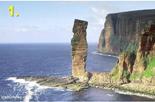 Stack and wave platform in sandstone.
Stack and wave platform in sandstone.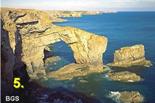 Rock Arch in limestone.
Rock Arch in limestone.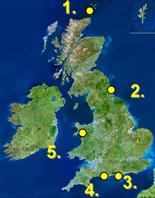
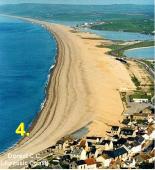
Chesil Beach, Dorset
Shingle Beach.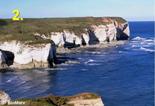 Chalk cliffs and wave platform.
Chalk cliffs and wave platform.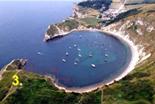 Bay & Headlands.
Bay & Headlands.
